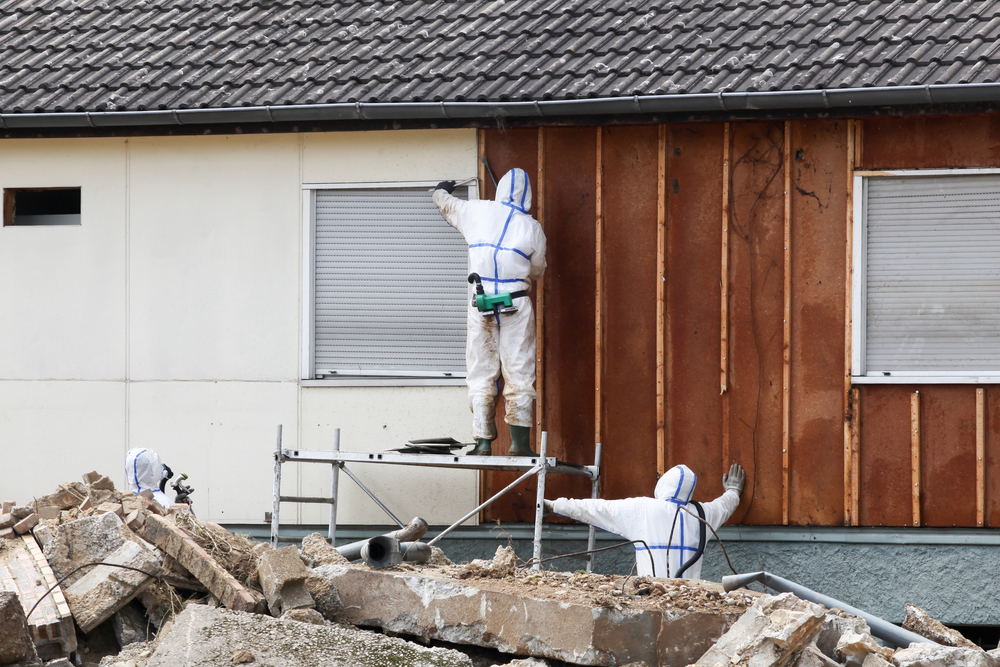
Asbestos, a naturally occurring mineral used in thousands of products, can pose serious health risks when inhaled. Managing asbestos in the workplace is crucial to ensure the safety of workers, protect the environment, and comply with regulations.
In this blog post, we will guide you through creating a comprehensive Asbestos Management Plan, taking into account the identification, risk assessment, control measures, roles and responsibilities, documentation, monitoring, and emergency preparedness.

An Asbestos Management Plan outlines the steps to manage health and safety risks associated with asbestos in the workplace. This plan includes:
Asbestos or ACM should be assumed present or identified if an Asbestos Survey or Hazardous Substances Audit has been conducted. This ensures suitable preparedness for possible emergencies involving asbestos.
Compliance with asbestos regulations is needed, and the Asbestos Management Plan must include information regarding the management of asbestos, its location, and its condition, particularly in areas where work involving asbestos may occur. Regularly reviewing the plan, at least once every five years or sooner if deemed necessary, ensures a high safety management standard.
Creating an effective Asbestos Management Plan involves a step-by-step process, from identifying asbestos and conducting risk assessments to establishing appropriate control measures.
We will analyze each of these steps in detail.

The initial step in creating an Asbestos Management Plan is recognizing all asbestos-containing materials in the property or structure and formulating an Asbestos Register, which can be done through an asbestos audit. A person must possess the proper knowledge and skills to correctly identify asbestos or ACM in the workplace. These abilities can be acquired through experience, qualification or training. Warning signs and labels should be used to identify asbestos and ACM in the workplace.
Asbestos and ACM may be present in buildings and plants constructed before 2004, with over 3000 documented products containing asbestos. For safety and adherence to regulations, accurately indicating the presence and location of asbestos or ACM in the workplace is required.
Risk assessments are instrumental in determining the potential for asbestos exposure and establishing necessary control measures. A comprehensive asbestos risk assessment procedure typically entails the following:
If asbestos, including naturally occurring asbestos, has deteriorated or been disturbed, the asbestos should be removed and the asbestos register revised to control the risk of exposure. When evaluating the risk of asbestos exposure, individual risk factors, genetic factors, and the utilization of personal protective equipment (PPE) must be considered. If the asbestos remains in good condition and is not disturbed, there is a low risk of airborne asbestos fibres being released into the air.
Establishing appropriate control measures is necessary to minimise the risk of asbestos exposure. The control hierarchy must be considered when selecting the most suitable control measure. Measures are implemented to control the risk to workers and others related to asbestos removal. Regularly reviewing control measures helps ensure their efficacy and maintain a secure work environment.
The most effective methods of controlling asbestos exposure include:

In asbestos management, various stakeholders, such as employers, employees, and safety representatives, play a significant role in ensuring a safe work environment and compliance with asbestos regulations.
We will analyze the roles and responsibilities of these stakeholders in more detail.
Training is paramount in ensuring a secure work environment from asbestos, as it helps personnel understand the hazards associated with asbestos exposure and teaches them how to manage asbestos-containing materials safely. Appropriate training allows personnel to work with asbestos without jeopardizing themselves or others and prepares them to respond suitably in an emergency or incident involving asbestos.
Safety representatives, also known as safety representatives, play a key role in managing asbestos in the workplace. Their responsibilities include:
The Person Conducting Business or Undertaking (PCBU) implements and maintains an Asbestos Management Plan. This entails:
Maintaining an Asbestos Management Plan involves:
Failure to meet these obligations can result in significant penalties, emphasizing the importance of compliance with health and safety regulations.

The Asbestos Register is a vital component of an Asbestos Management Plan, documenting the location, type, and condition of asbestos-containing materials (ACM) in a workplace. Access to the asbestos registers is necessary for those working at the property. The register must include details such as the location, condition, and type of asbestos and ACM. A label should be affixed to the electrical meter box. This will indicate that asbestos is present in the building and provide a location for the register. It is highly recommended to do this.
Regular review and maintenance of the Asbestos Register guarantees the accuracy of the data included. During the review process, use the process as an opportunity to perform maintenance or service work, such as:
Regular monitoring and review of the Asbestos Management Plan and Asbestos Register are key for ongoing safety and compliance. The legal requirements for monitoring and reviewing Asbestos Management Plans may vary according to the jurisdiction, so it is advisable to consult the relevant regulations and guidelines specific to your location.
Essential steps to be taken when reviewing an Asbestos Management Plan include:
Reviewing the asbestos register is essential to ensure the accuracy of the data included. It is imperative to use the process to traverse the workplace and guarantee that the occurrence and position of asbestos identified on the register is distinctly indicated and remains in the condition specified on the register.

Preparing for and responding to asbestos incidents is key to asbestos management. Emergency procedures, staff training, and communication with relevant authorities are essential in dealing with such incidents. In the event of an asbestos incident, the obligatory steps to be undertaken include:
Training personnel to manage asbestos-related emergencies requires completing asbestos awareness training and identification courses. Communicating with relevant authorities regarding asbestos incidents involves identifying the relevant authorities, gathering all pertinent information about the asbestos incident, contacting the appropriate authorities through their designated channels, and adhering to any instructions or guidance provided by the authorities regarding the management and remediation of the asbestos incident.
In conclusion, creating and implementing a comprehensive Asbestos Management Plan is crucial to ensure the safety of workers and compliance with asbestos regulations. Businesses can effectively manage asbestos in the workplace and protect employees and the environment by following the steps outlined in this blog post, including identification, risk assessment, control measures, roles and responsibilities, documentation, monitoring, and emergency preparedness.
In areas like Melbourne and Victoria, incorporating Asbestos Removal Australia into the Asbestos Management Plan can be highly beneficial. Asbestos Removal Australia is a specialist firm with expertise in responding to asbestos situations, inspecting potential asbestos-containing materials (ACMs), organising appropriate testing, and removing any discovered asbestos. Their inclusion in the plan can ensure a swift and professional response to any asbestos-related incidents, further enhancing workplace safety and compliance measures.
An asbestos management plan is a document that outlines decisions and reasons for the management of asbestos at the workplace, such as safe work procedures and control measures. It includes information on identifying asbestos and ACM, references or links to the asbestos register, and locations of signs and labels. Procedures for incidents and emergencies involving asbestos must also be outlined in the plan.
Asbestos management should follow the hierarchy of control measures, considering removing asbestos-containing material (ACM) before other control measures, such as encapsulation, enclosure, and sealing.
The duty to manage asbestos requires a person with management or control of a workplace to identify any present asbestos or ACM by a competent person and to review and revise risk control measures if necessary to ensure that the risks associated with asbestos are adequately controlled.
Asbestos Management Plans should be reviewed at least every five years or sooner.
Safety representatives are essential for asbestos management, conducting inspections, discussing hazards with management and ensuring compliance with regulations.
Posted By: Tommy Clappers
Leave a Reply